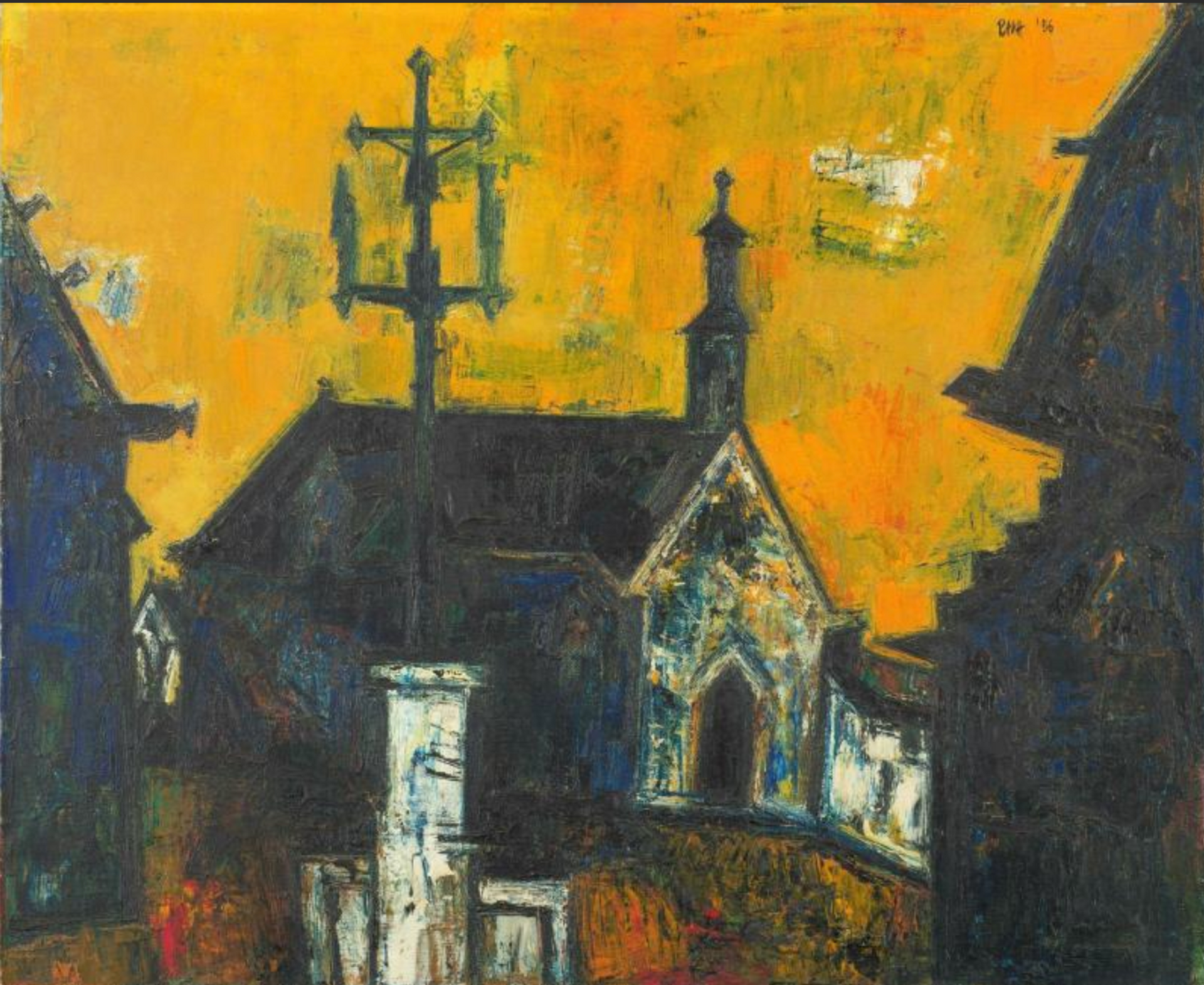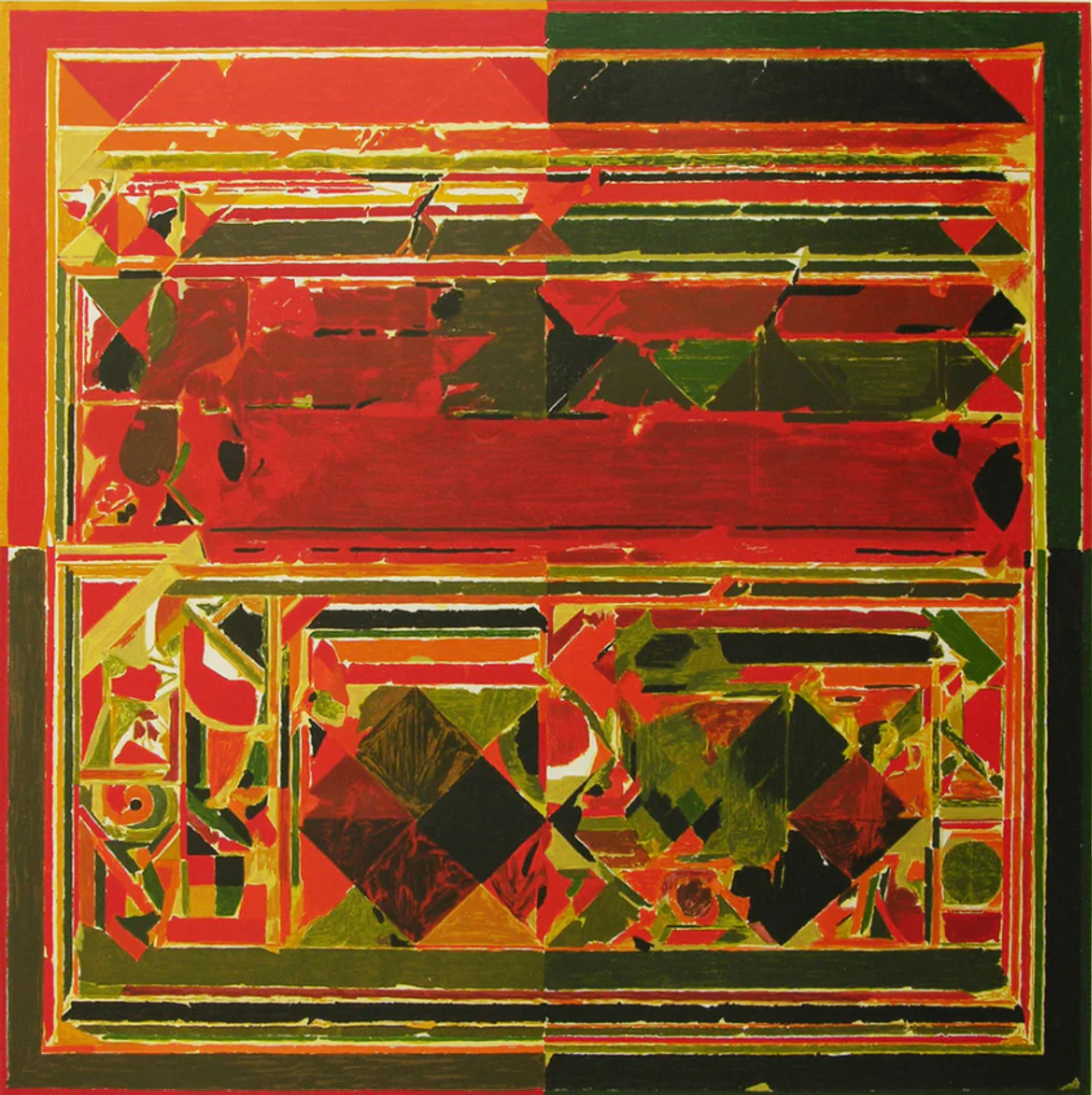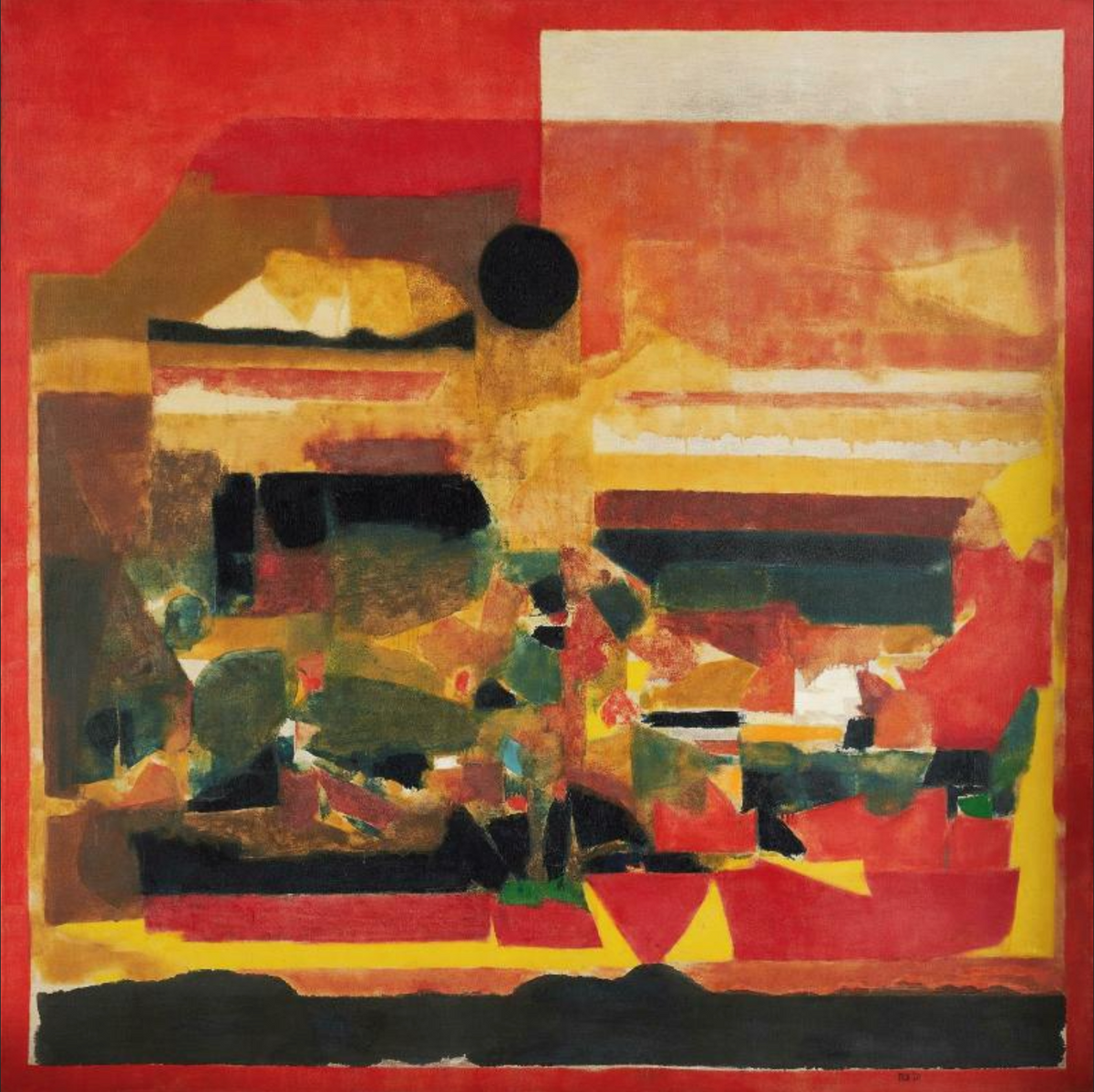One of India's best-known Modernist painters, the late SH Raza, receives his largest-ever retrospective at the Centre Pompidou in Paris. SH Raza (1922-2016) (until 15 May) is the first major monographic show of the artist, as well as the first to take place in a state-run institution, and brings together more than 90 works in the capital city of his second home.
The Pompidou show spans the artist's entire career, from his beginnings in 1940s Mumbai (then called Bombay), where he was one of the founding members of the hugely influential Bombay Progressives Artists' Group, to his move to France in 1950, where he would be based on-and-off for the remainder of his life, and where he developed a style that mixed post-war French and American painting with Rajasthani miniature traditions. His subjects ranged from country landscapes and churches to Indian temple congregations, Islamic architecture and Western cityscapes; eventually he moved into his more abstract—and arguably better-known—period, which dates from the late 1960s onwards and incorporates elements of Tantrism from South Asian scriptures.
"Raza often told me, 'How I paint I learned from France, but what I paint I get from India,'" says Ashok Vajpeyi, the executive trustee of the Raza Foundation, which was established by the artist in 2001. Speaking of the stylistic evolution charted by the show, he says that Raza was picked up by a Parisian gallerist in the mid 1950s and quickly began using oil paints and a palette knife, mimicking techniques of European Post-Impressionist masters such as Cézanne. But "he remained, above all, a painter of inner nature" and "a master colourist in a way that very few have done in India, at least", Vajpeyi says. The overall result is, he adds, an "alternative modernism—not one of rupture and tensions, but of peace and harmony, which is quite unlike that of his peers in both France and India."

Raza's Eglise et Calvaire Breton (1956)
© The Raza Foundation. All rights reserved / Adagp, Paris
Staging this show is a major coup for the Raza Foundation, which had worked for more than five years to pitch and organise it. According to Vajpeyi, the exhibition was also offered to the National Gallery of Modern Art in Delhi, India's most prominent state-run museum of 19th- and 20th-century art, but the institution did not accept the proposal. Vajpeyi declines to comment as to why he thinks the NGMA did not accept. A spokesperson for the NGMA Delhi also declined to comment on the matter.
The foundation was also pivotal to a spate of shows in India that took place in 2022, the centenary year of Raza's birth, in three Indian private museums: the Piramal Museum of Art and the Jehangir Nicholson Art Foundation, both in Mumbai, and the Kiran Nadar Museum of Art in Delhi. All three museums are key lenders to the show, bolstered by further loans from a number of private collectors, including the dealers Amrita Jhaveri, co-founder of Jhaveri Contemporary and Roshini Vadehra, director of Vadehra Art Gallery.
Despite the Pompidou having one of the world's strongest collections of French Modernism, none of these works have been included to contextualise Raza with his peers and heroes. Defending this choice, the show's co-curator Diane Toubert says: "We did not choose to present Raza in relation to his French contemporaries because we did not want to encourage a derivative interpretation of Raza's work. The exhibition highlights the stakes of post-independance modern Indian art, focusing on transcultural dynamics in Raza’s practice."

Raza's Saurashtra (1983)
© The Raza Foundation. All rights reserved / Adagp, Paris
Major works in the show include the grey abstract La Pluie (1964) from the collection of prominent South Asian art collectors Jane and Kito de Boer, and the orange-hued Saurashtra (1983), one of his largest paintings, named after a southern region of Gujurat and loaned by the KNMA. It became the most expensive work by an Indian artist at auction when the museum acquired it £2.4m at Christie's in London in 2010.
Indeed, the artist's first major European show also helps narrow a gap between his exhibition history and his booming market. Like many of his Bombay Progressive peers, Raza's work continues to dominate South Asian auctions, both internationally and domestically. Roshini Vadehra, the director of Vadehra Art Gallery in Delhi, points out that the Bombay Progressives were one of the few artists groups whose prices rebounded quickly following the 2000s recession, and have remained strong since. But the institutional reception of these artists, both domestically and abroad has "never quite matched up" to these prices, she says. "India's market and museums do not have a strong link like in the West, because we do not have institutions. But the works in this show are of an exceptional quality and this show proves Raza's place in the canon."


